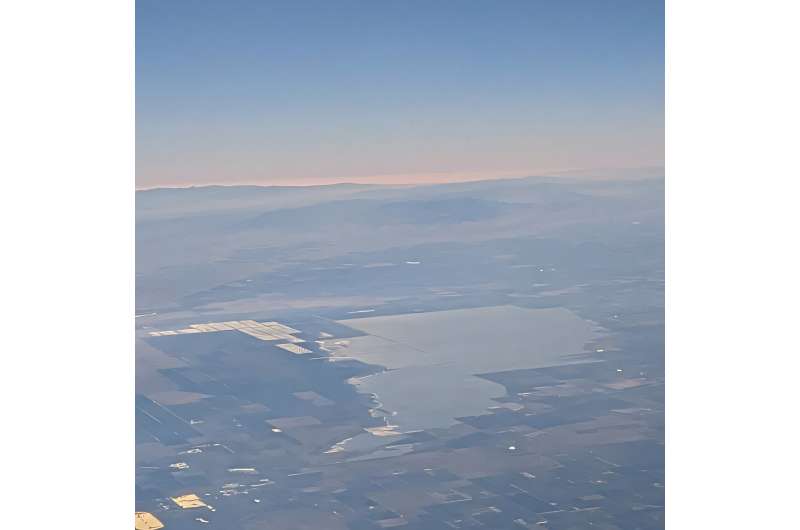Tulare Lake, once the largest freshwater body west of the Mississippi River, is on the brink of revival after more than a century of being drained for agricultural use. A coalition of tribal leaders, environmental advocates, and community activists is spearheading a proposal to restore part of the lake in California’s San Joaquin Valley. This ambitious plan aims to create a reservoir and wetlands near Interstate 5, potentially transforming the landscape and benefiting local ecosystems and communities.
“Water brings life,” said Robert Jeff, vice chairman of the Santa Rosa Rancheria Tachi Yokut Tribe. “Putting that water back on the land is going to benefit everybody and everything.” The proposal, which includes building levees and acquiring nearly 24,000 acres of farmland, is seen as a multifaceted solution to regional challenges, including flood management and wildlife habitat restoration.
Historical Context and Cultural Significance
Tulare Lake holds deep cultural and spiritual significance for the Tachi Yokut Tribe, who refer to the lake as Pa’ashi. Historically, the lake supported a rich ecosystem teeming with wildlife and sustained the Yokut tribes. However, the lake was drained in the late 1800s and early 1900s as settlers diverted water for agriculture, leading to the displacement of Native communities.
In recent years, the lake has occasionally reappeared during periods of heavy flooding, most notably in 2023 when floodwaters inundated farmlands and temporarily revived the lake’s vast expanse. The Tachi Yokut Tribe celebrated this resurgence with ceremonies, underscoring the lake’s enduring importance.
The Proposal: Engineering and Environmental Benefits
The engineering proposal, submitted to California’s natural resources secretary Wade Crowfoot, outlines a plan to create a smaller but deeper reservoir than the one formed during the 2023 floods. The reservoir would store up to 500,000 acre-feet of water, comparable to Los Angeles’s annual water usage. This project aims to provide flood protection, water storage, and wetland restoration.
“The first and foremost reason for this project is flood protection,” said John Ennis, the civil engineer behind the proposal. “It’s only going to happen again, and it’s probably going to be worse the next time.”
Ennis’s plan also includes a 2,280-acre wetland restoration zone with constructed islands to support bird habitats along the Pacific Flyway migratory route. The reservoir’s design would prevent water loss through the lake bed’s thick clay layer, allowing for groundwater replenishment and addressing issues of land subsidence caused by overpumping.
Challenges and Funding Opportunities
Turning this vision into reality faces several hurdles, including securing funding, acquiring land, and ensuring a consistent water supply. The project could cost nearly $1 billion, but supporters see potential in tapping into California’s Proposition 1 bond funds, designated for water storage and ecosystem restoration projects.
The land required for the project is currently owned by entities like Sandridge Partners, J.G. Boswell Co., and the Los Angeles County Sanitation Districts. While initial discussions with landowners have begun, none have publicly endorsed the proposal yet.
Community Support and Future Prospects
At a recent workshop at the Tachi Palace Casino Resort, supporters expressed enthusiasm for the restoration effort. They formed a work group to advance the project, recognizing its potential to enhance the region’s ecosystems and align with California’s groundwater management goals.
“Restoring a modern version of the lake would represent a rethinking of the region’s relationship to water,” said Jann Dorman, executive director of Friends of the River. “It’s really the people in the valley who need to lead this.”
As the project gains momentum, stakeholders are optimistic about its potential to transform the San Joaquin Valley. The plan not only aims to restore a vital ecosystem but also to foster a more sustainable relationship with water resources in the face of climate change and increasing flood risks.
Richard Harriman, a volunteer consultant for the Tachi Yokut Tribe, emphasized the need for widespread support and education. “We need to look at every possible alternative in trying to develop a systemic approach to the restoration,” he said, suggesting that public awareness campaigns could help garner backing for the initiative.
The revival of Tulare Lake represents a historic opportunity to restore a significant natural and cultural landmark, offering a vision of ecological and community renewal in California’s heartland.
 Breakthrough in Top-Quark Pair Observation at CERN’s LHC
Breakthrough in Top-Quark Pair Observation at CERN’s LHC Breakthrough in Quantum Battery Technology Extends Lifespan 1,000-Fold
Breakthrough in Quantum Battery Technology Extends Lifespan 1,000-Fold Yulia Putintseva Requests Spectator Removal at Wimbledon Over Safety Concerns
Yulia Putintseva Requests Spectator Removal at Wimbledon Over Safety Concerns Exploring Canadian Cuisine: A Culinary Journey Across a Diverse Nation
Exploring Canadian Cuisine: A Culinary Journey Across a Diverse Nation STEM Immigration: Shaping Diversity in the U.S. Workforce
STEM Immigration: Shaping Diversity in the U.S. Workforce